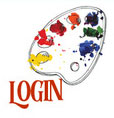
Stats
Member Since March 28, 2025
Love Given: 0
Posts: 0
Love Given: 0
Posts: 0
Badges
Badges go here...
The Art of Luck: How Design and Sound Influence Player Experience
What keeps someone spinning the reels, even after a long day? It’s not just the chance to win. It’s the lights, the rhythm, the anticipation. Every spin triggers something in the brain — a mix of curiosity and emotion. And behind that emotional pull lies smart design. Not accidental design, but intentional choices in layout, sound, animation, and color that work together to keep players engaged. Whether you've played once or often, you've likely felt it. Let’s look deeper into how these subtle design details shape player behavior and create lasting memories.
Visual Cues That Grab and Hold Attention
Walk into any casino — physical or digital — and you're instantly surrounded by color. That’s not random. Designers use a mix of visual elements to make sure your attention lands right where they want it to.
Colors are chosen carefully. Red triggers excitement. Gold hints at reward. Blue can signal trust. Developers layer these choices to create specific moods. And it works.
Consider the placement of buttons, spin wheels, or animations after a win. They’re almost always framed in glowing effects or moving lights. These aren’t just fun to watch — they direct the eye, create energy, and encourage more play.
Here’s what visual design often includes:
Bright, contrasting colors to highlight “Spin” or “Play” buttons
Celebratory animations after small wins to create feedback loops
Reels designed with near-miss visuals — a powerful motivator
Ever noticed how just missing a jackpot feels like you were so close? That’s design at work, not pure chance. The sensation of a “near win” is carefully crafted and has been shown to increase repeat play.
The Role of Sound in Emotional Engagement
Turn the volume off and play a slot — it’s a totally different experience. Sound has an invisible but strong impact on how we feel during a session. It builds tension, highlights wins, and reinforces actions.
Here’s how sound influences the playing experience:
Startup jingles welcome players and build positive anticipation
Clicking sounds during reel spins create a sense of motion and pace
Rising tones increase excitement before potential wins
Rewarding chimes after a win boost dopamine, even for small prizes
These audio patterns aren’t randomly chosen. They’re tested and refined. Just like in video games or movie scores, slot game composers work to create audio that complements visuals and keeps users in the zone.
Even the quiet moments — the pauses — are used to great effect. The silence before a big spin outcome adds tension. That brief gap pulls players forward, making the result more satisfying or dramatic, depending on what shows up.
If you've played multiple online slots, you've probably noticed that some just feel better. That's likely because their sound design isn't just background noise — it's actively shaping your experience.
Where Design Meets User Habit
People don’t just play slots for big wins. Many play for entertainment, for a break, or to unwind. That’s where the small design decisions come into play — they meet real user habits and expectations.
Here’s where game creators have gotten smart: they understand that a game has to be easy to start, fast to load, and not ask too much. That’s why most successful slot platforms emphasize quick entry, clear design, and responsive controls.
And yes, variety matters too. When users want to try something new or shift from one theme to another — say from ancient Egypt to a futuristic neon style — they can do it in seconds.
One platform known for this type of user-friendly experience is Parimatch https://parimatchvn.com/vi/casino/slots , where players can access a wide selection of slots with rich visuals and dynamic sounds that reflect top-tier development work. This kind of seamless switch between games makes casual play easy and rewarding — without the friction many other sites have.
Behavior Loops and Why We Stay a Bit Longer
Even short sessions can stretch into longer ones, and that’s not just a player decision — it’s often a design outcome. Developers create small loops that reward continued play without being too obvious.
For example:
Small but frequent wins reinforce participation
Bonus rounds add variation, making players want to keep progressing
Progress meters show how close you are to unlocking a reward
Free spin offers show up just when you were thinking of stopping
These behavioral nudges are based on basic psychology. We all like to feel that we’re improving, collecting, progressing. So, when a game offers a new feature just after a big spin or shows you're “only 2 wins away” from unlocking a chest, that’s design working with human nature.
But when well done, it doesn’t feel like manipulation. It feels like fun.
Balancing Excitement and Clarity
Design isn’t just about making things exciting — it’s also about avoiding frustration. If a game is too noisy, too fast, or too confusing, people drop off. That’s why clarity is just as important as visual flare.
Strong design also includes:
Clean fonts that are easy to read even on mobile
Clear display of win/loss amounts
Intuitive button placement (without pop-ups getting in the way)
Smooth, lag-free gameplay
The best-designed games strike that balance between energy and simplicity. And players notice. It's the reason why some games get revisited and others get closed after two minutes.
When you combine good design with good user understanding — things just click.
Final Thoughts
What looks like luck is often guided by strategy. Not from the player’s side — but from the team that builds the experience. From the glow of a spin button to the echo of a win jingle, every moment is shaped to give players something enjoyable, clear, and engaging.
It’s not about tricking people. It’s about keeping things fun and making the time feel well spent. Because when users feel good, they come back. Not just for the win — but for the experience.
Visual Cues That Grab and Hold Attention
Walk into any casino — physical or digital — and you're instantly surrounded by color. That’s not random. Designers use a mix of visual elements to make sure your attention lands right where they want it to.
Colors are chosen carefully. Red triggers excitement. Gold hints at reward. Blue can signal trust. Developers layer these choices to create specific moods. And it works.
Consider the placement of buttons, spin wheels, or animations after a win. They’re almost always framed in glowing effects or moving lights. These aren’t just fun to watch — they direct the eye, create energy, and encourage more play.
Here’s what visual design often includes:
Bright, contrasting colors to highlight “Spin” or “Play” buttons
Celebratory animations after small wins to create feedback loops
Reels designed with near-miss visuals — a powerful motivator
Ever noticed how just missing a jackpot feels like you were so close? That’s design at work, not pure chance. The sensation of a “near win” is carefully crafted and has been shown to increase repeat play.
The Role of Sound in Emotional Engagement
Turn the volume off and play a slot — it’s a totally different experience. Sound has an invisible but strong impact on how we feel during a session. It builds tension, highlights wins, and reinforces actions.
Here’s how sound influences the playing experience:
Startup jingles welcome players and build positive anticipation
Clicking sounds during reel spins create a sense of motion and pace
Rising tones increase excitement before potential wins
Rewarding chimes after a win boost dopamine, even for small prizes
These audio patterns aren’t randomly chosen. They’re tested and refined. Just like in video games or movie scores, slot game composers work to create audio that complements visuals and keeps users in the zone.
Even the quiet moments — the pauses — are used to great effect. The silence before a big spin outcome adds tension. That brief gap pulls players forward, making the result more satisfying or dramatic, depending on what shows up.
If you've played multiple online slots, you've probably noticed that some just feel better. That's likely because their sound design isn't just background noise — it's actively shaping your experience.
Where Design Meets User Habit
People don’t just play slots for big wins. Many play for entertainment, for a break, or to unwind. That’s where the small design decisions come into play — they meet real user habits and expectations.
Here’s where game creators have gotten smart: they understand that a game has to be easy to start, fast to load, and not ask too much. That’s why most successful slot platforms emphasize quick entry, clear design, and responsive controls.
And yes, variety matters too. When users want to try something new or shift from one theme to another — say from ancient Egypt to a futuristic neon style — they can do it in seconds.
One platform known for this type of user-friendly experience is Parimatch https://parimatchvn.com/vi/casino/slots , where players can access a wide selection of slots with rich visuals and dynamic sounds that reflect top-tier development work. This kind of seamless switch between games makes casual play easy and rewarding — without the friction many other sites have.
Behavior Loops and Why We Stay a Bit Longer
Even short sessions can stretch into longer ones, and that’s not just a player decision — it’s often a design outcome. Developers create small loops that reward continued play without being too obvious.
For example:
Small but frequent wins reinforce participation
Bonus rounds add variation, making players want to keep progressing
Progress meters show how close you are to unlocking a reward
Free spin offers show up just when you were thinking of stopping
These behavioral nudges are based on basic psychology. We all like to feel that we’re improving, collecting, progressing. So, when a game offers a new feature just after a big spin or shows you're “only 2 wins away” from unlocking a chest, that’s design working with human nature.
But when well done, it doesn’t feel like manipulation. It feels like fun.
Balancing Excitement and Clarity
Design isn’t just about making things exciting — it’s also about avoiding frustration. If a game is too noisy, too fast, or too confusing, people drop off. That’s why clarity is just as important as visual flare.
Strong design also includes:
Clean fonts that are easy to read even on mobile
Clear display of win/loss amounts
Intuitive button placement (without pop-ups getting in the way)
Smooth, lag-free gameplay
The best-designed games strike that balance between energy and simplicity. And players notice. It's the reason why some games get revisited and others get closed after two minutes.
When you combine good design with good user understanding — things just click.
Final Thoughts
What looks like luck is often guided by strategy. Not from the player’s side — but from the team that builds the experience. From the glow of a spin button to the echo of a win jingle, every moment is shaped to give players something enjoyable, clear, and engaging.
It’s not about tricking people. It’s about keeping things fun and making the time feel well spent. Because when users feel good, they come back. Not just for the win — but for the experience.












